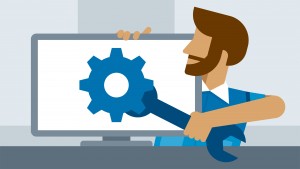Solar Charge Coontroller Common Problems and Solutions
A solar charge controller is an essential part of solar power system. Its purpose is to keep your deep cycle batteries properly fed and safe for the long term. The basic functions of a solar charge controller is quite simple. It blocks reverse current and prevent battery overcharge and overdischarge.
Unfortunately, the charge controller doesn’t always work as is expected. When this happens, you may end up thinking that your entire solar power system has an issue. But since you probably don’t have the time to troubleshoot all the components of the solar power system, it would be a good idea to have a way of detecting problems specific to the charge controller.
In this article, we will look at some of the ways of troubleshooting solar charge controller problems.

Test before starting
You need to understand the function and the use of the multimeter, and you also need to know how to make the correct use of the power settings and the expected power. When test the charge controller, you’d need to make sure that the battery isn’t fully charged. It won’t accept the current if the battery is charged fully.
Lastly, you need to make sure that you disconnect the panel from the charge regulator before disconnecting the regulator of the battery. And when you are reconnecting these components, you’d have to connect your regulator right to the battery before connecting the solar panel. Following these steps will reduce the risk of damage to the solar charge regulator.
After testing, we can find some problems and find ways to work out them.
1、Battery voltage is too low, controller has turned off the load.
Solution: Use AC charger to charge the battery or change a fully charged battery.
2、The load output is over-current, controller has turned off the load.
Solution: Decrease the load, use Minus button to turn on the load or the load will be automatically turn on by the controller after 20 minutes.
3、Load output is short circuit, the controller has turned off the load.
Solution: Remove the short-circuit failure of load, use Minus button to turn on the load
4、Battery voltage is too high, controller has turned off the load.
Solution: Check whether the battery connecting cable is loose, check whether the battery capacity is too small, check whether there is another charger connected with the battery.
5、The output current of solar panels exceeds rated current so that the controller stop charging.
Solution: Check whether the power of solar panel has been overpower, decrease the parallel quantity of solar panels and then the controller can be start charging automatically after 2 minutes.
In conclusion, solar users should pay attention to the operation of solar charge controller. When the problem happens, we need to find the reason and quickly figure out them. Besides, careful maintenance for solar charge controller is necessary.





































































































